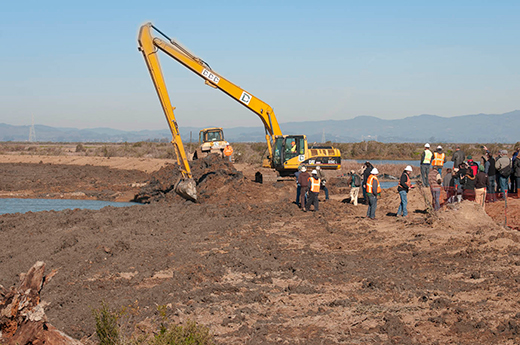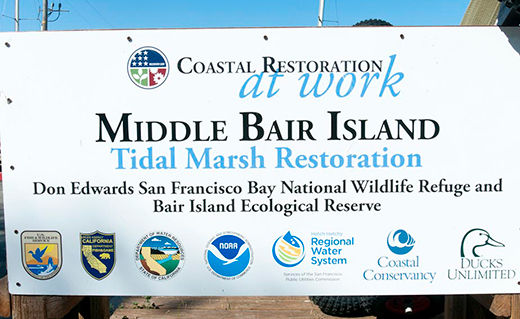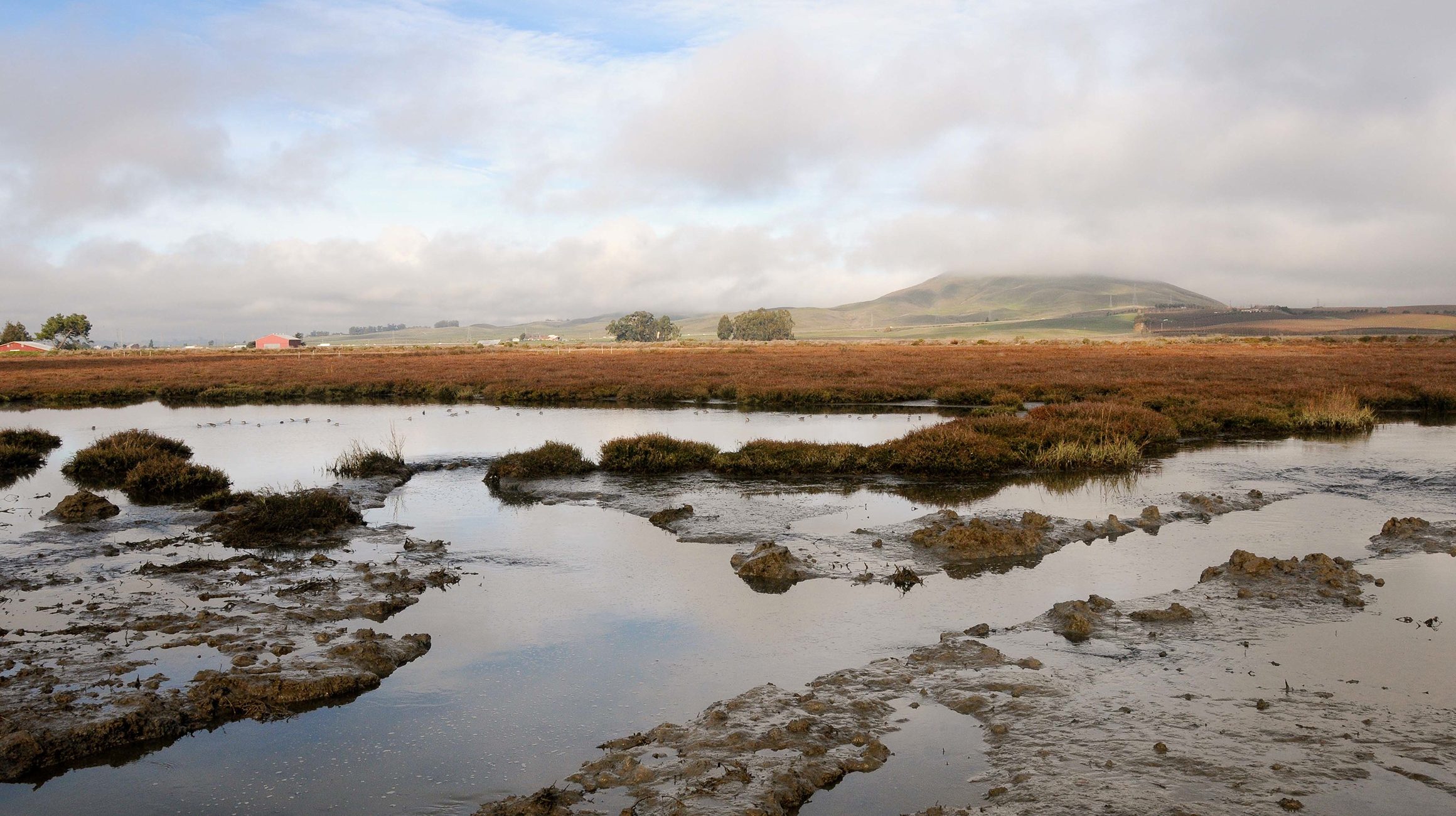The San Francisco Bay is a rich wetland ecosystem that is home to many species of waterfowl, shorebirds, and other waterbirds. It is also home to threatened and endangered species such as the Ridgway’s Rail and salt marsh harvest mouse. The San Francisco Bay ecosystem suffers from a range of environmental degradations, including dramatic loss of wetland habitat from development, high levels of pesticides, metals and other toxic substances in the water, invasive fish species, and high demand for water on the Sacramento and San Joaquin rivers. The San Francisco Bay Joint Venture (SFBJV) is tasked with conserving this ecosystem, and works to balance the needs of birds with the needs of the public to enjoy open spaces in this urban area.

Wetland restoration in action. Photo courtesy of Beth Huning.
Since funding protection and restoration of the San Francisco Bay had proved challenging, SFBJV partners helped pass state legislation that created a regional authority, the San Francisco Bay Restoration Authority, specifically to raise money for wetland restoration projects, including those supported by the SFBJV. SFBJV and partner organizations sought to put forward a ballot measure that would use parcel assessments to generate funds for tidal wetlands restoration. This parcel tax would be assessed by the San Francisco Bay Restoration Authority on each parcel of taxable real estate within the nine Bay Area counties. Proceeds from the tax would go to wetland habitat projects to restore bird habitat reduce trash and pollution, improve water quality, mitigate flooding, and increase public shoreline access. Since this would change property taxes, two thirds of voters would need to approve the measure.
To ensure that this ballot measure reflected the priorities of the Bay Area voters, SFBJV contributed to its partners to hire human dimensions research firms to conduct a series of focus groups and phone polls. External consultancies brought essential expertise in social science research design and methodology to the process and worked with the group of San Francisco Bay organizations to tailor the research to their needs. Multiple polls took place between 2010 and 2015 to monitor voters’ attitudes towards the economy and political climate in order to ascertain the likelihood that the measure would pass and when, the amount that voters were willing to accept for a tax, whether a parcel assessment or cost-benefit assessment would be preferable, and how to communicate about the campaign to ensure success. Since the measure needed to pass by two thirds, human dimensions research was seen as crucial to ensure campaign success.

Restoration project completed by San Francisco Bay Joint Venture and partners. Photo courtesy of Beth Huning.
Research Insights
- Surveys helped determine messaging that would resonate with voters. For instance, participants highly valued clean water and habitat for wildlife, but saw public access as less important.
- Due to polling and other analyses, it was determined that the ballot would be too crowded in a November presidential election. Competing tax measures and voter turn-out were also factors. Therefore, the measure was placed on the June primary ballot.
- Polls suggested that the public would be comfortable supporting a parcel tax rate that would raise $25 million annually between July 2017 and June 2037.
Outcomes
In light of this research, when the campaign kicked-off, the SFBJV provided mapping, data, and outreach resources for partners to conduct outreach to increase public approval prior to the vote. The campaign created a coordinating committee that involved Save the Bay as lead advocacy organization, well-connected individual volunteers from around the Bay Area, and community organizers hired in each county to secure local support. Many different actions were undertaken, and SFBJV’s work to support partners included:
- Hosting a series of wetland tours for decision-makers, conveying the importance of the measure,
- Identifying potential audiences and developing an outreach strategy with JV partners that included talking points (what to say and what not to say) and distributing them to JV partners to use in their communications, and
- Developing a list of descriptions and maps of potential projects that would become part of the campaign and providing them to partners in each county so that the partners could promote the potential benefits within their regions.
Through this combination of efforts, in June 2016 Bay Area voters approved a ballot measure by over 70% that will provide $500 million for wetland restoration throughout the tidal reaches of the San Francisco Bay Area over the next 20 years. Human dimensions research to ascertain public sentiment was an essential component of the planning process that made this success possible.
To learn more about the ballot measure and what the funding will achieve, go to http://www.sfbayrestore.org/ or contact Beth Huning: bhuning@sfbayjv.org

